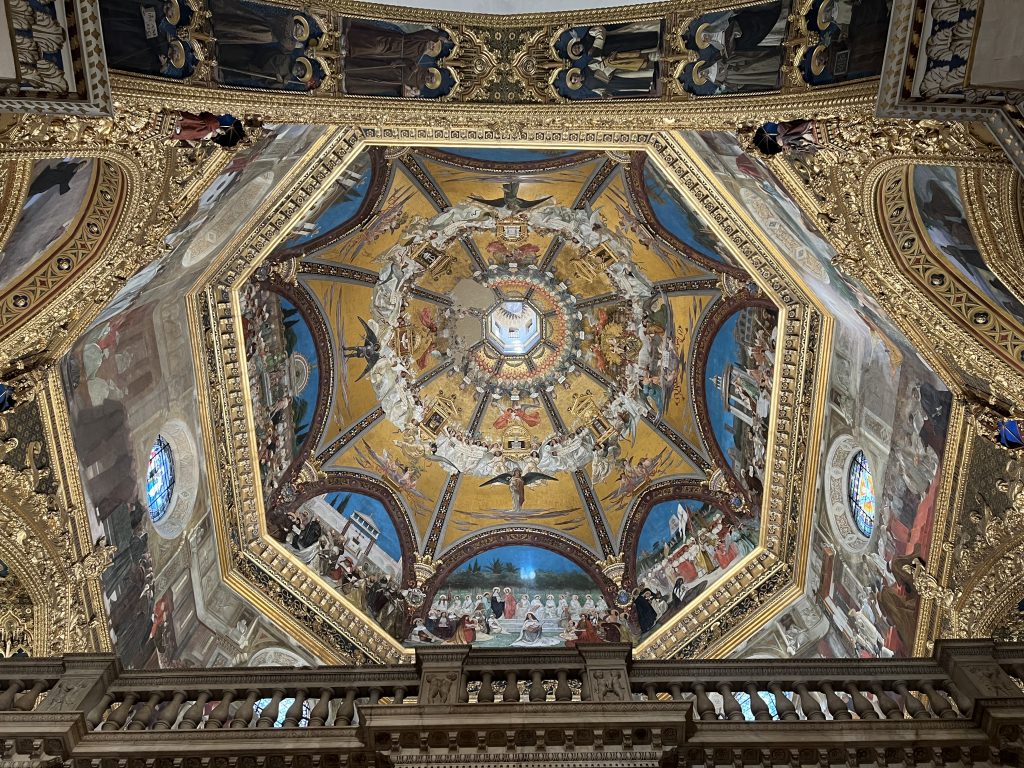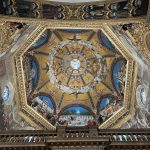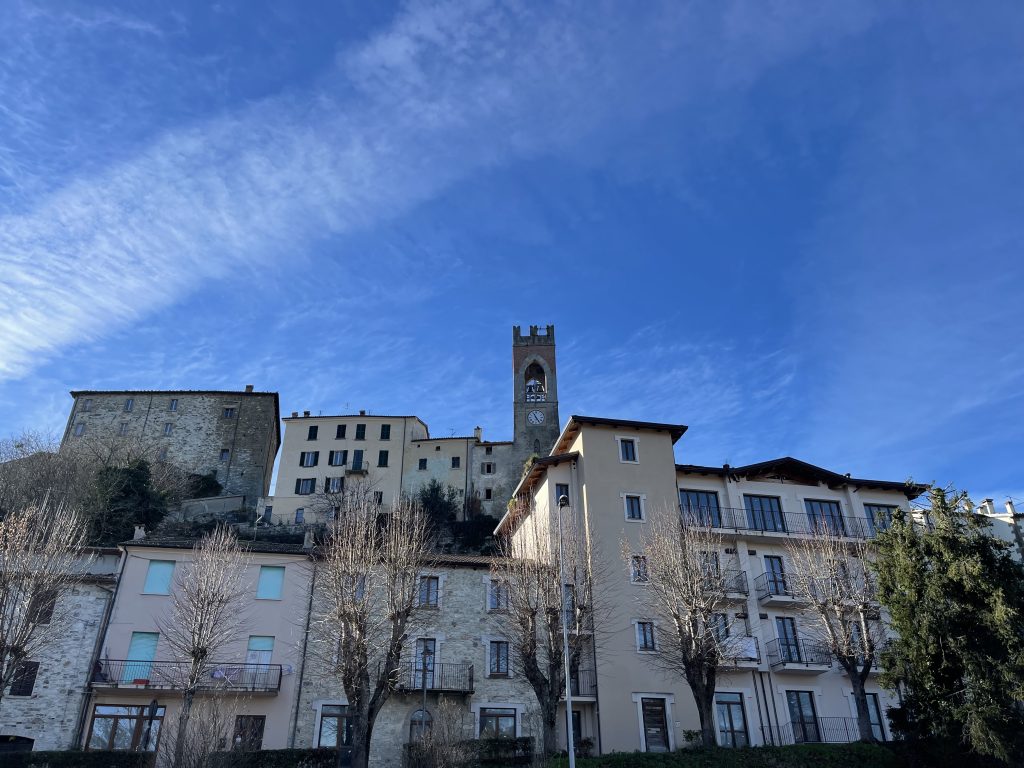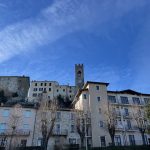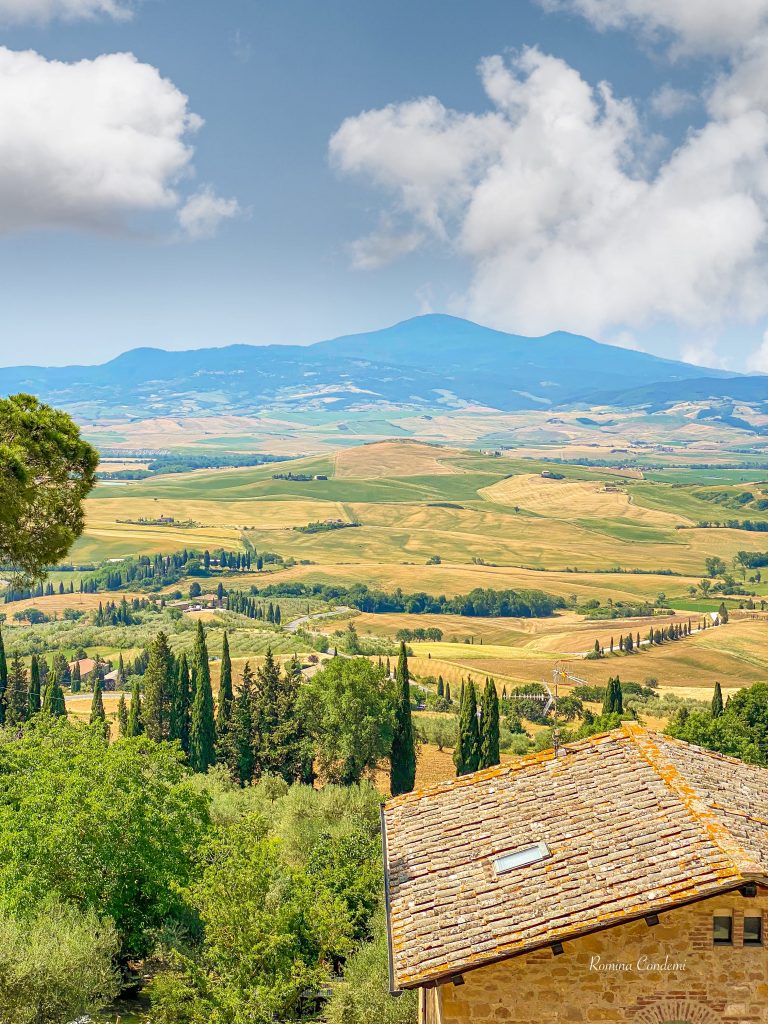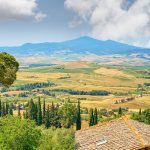«To those who come from the sea, the Port of Venus appears on the beach and here
in the hills that cloak the olive tree it is known that even Minerva forgot Athens of her homeland for so much sweetness of her … »
Francesco Petrarca, 1338
Portovenere is an ancient and charming seaside village that rises along the western end of the Gulf of La Spezia, right on the last branch of the Ligurian Riviera di Levante.
Veduta di Portovenere
Its name, so evocative of beauty and distant myths, derives from the Latin Veneris Portus, denomination of an ancient temple dedicated to the goddess Venus Ericina which stood on the place where today the famous church of San Pietro is located.
 The dedication to Venus was probably linked to the fact that, according to myth, the goddess was born from the foam of the abundant sea just below that promontory.
The dedication to Venus was probably linked to the fact that, according to myth, the goddess was born from the foam of the abundant sea just below that promontory.
The church of San Pietro, with a stone facade with black and white bands typical of Genoese Gothic, was built between the fifth and thirteenth centuries on the rock of the promontory of the Bocche di Porto Venere.
The church is the “Christian temple” mentioned by the Ligurian poet Eugenio Montale in a suggestive poem, dedicated to Portovenere and shown in a stone slab set along the streets of the town.

In the nineteenth century another poet was enchanted by the somewhat harsh and wild beauty of the village: it is the Englishman George Byron who in Portovenere sought inspiration for his literary works.
The “Byron’s cave” takes its name from him, located near the spur of rock below the church of San Pietro and the ancient defensive post of the Doria castle.
Legend has it that Byron, known for being a libertine poet and globetrotter, dived into the surrounding waters, swimming for 8 km to reach his colleague, the poet Shelley who was staying in nearby Lerici.
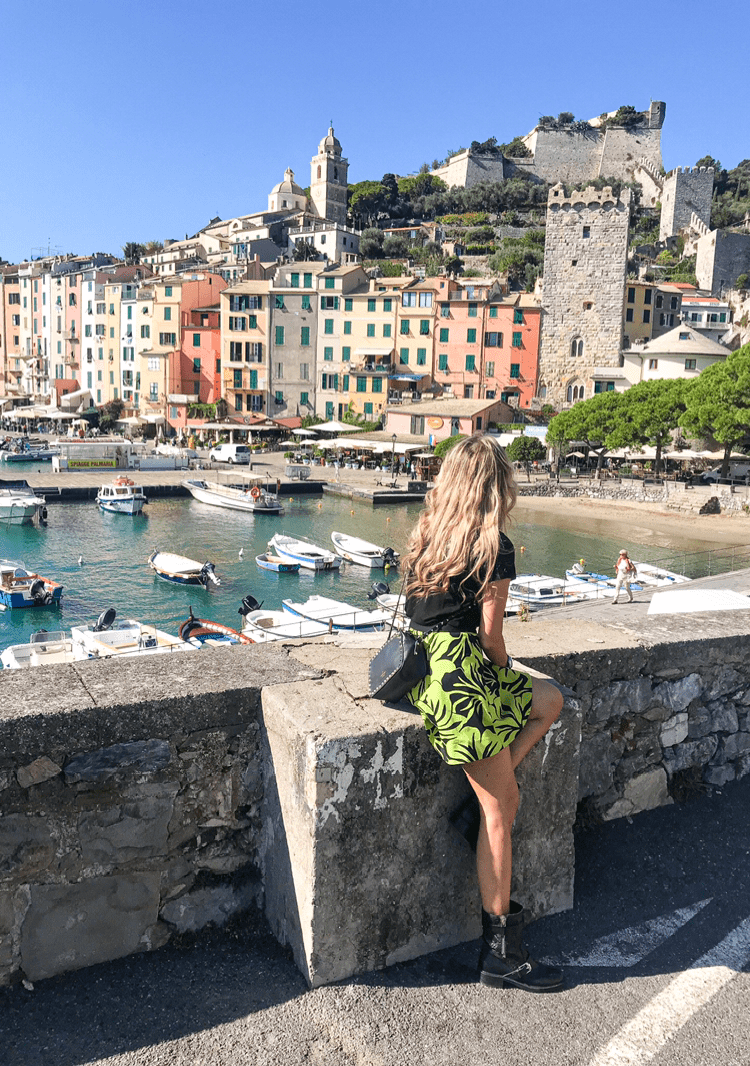

Those who reach Portovenere by sea are immediately struck by the row of tall and narrow colored houses that overlook the pier: these are the Genoese fortress-houses of the so-called new village built closely adjacent to each other so as to form a perfectly integrated defensive system. .
Only a few narrow and vaulted stairways, the so-called “chapters”, open between the houses to allow the descent to the sea.


Traditional and characteristic is the feast dedicated to the White Madonna celebrated on August 17: for the occasion, the promontory of Punta San Pietro is illuminated by torches and thousands of candles while the icon of the White Madonna is carried in procession along the streets of the village. in memory of the cessation of the plague epidemic of 1399.


Portovenere is the starting point of scenic trails that allow you to reach the beautiful and famous locations of the Cinque Terre National Park.
Among the most evocative itineraries there is certainly the path that from the village of Portovenere climbs up to Campiglia and then leads to Monesteroli, a unique place reachable through a staircase of over one thousand hundred steps overlooking the sea, defined as “a true monument to the fatigue of ‘man”
Currently, in fact, the small village, surrounded by the sea, woods and vineyards, is almost uninhabited, but once upon a time that staircase was walked daily by men and women who, in a “heroic” way, dedicated themselves to agriculture and the cultivation of vines.
“Man built you stone by stone, now descend to the sea, not held back by chained human Prometheans …”

